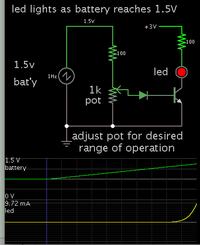Michael Weaser
Member level 3

i am building an battery circuit and need an LED to turn on when the battery is at the correct voltage. I need help in choosing the right op-amp, configurate it as a comparator, and also than set up the reference voltage and the voltage in,and attaching it to the battery circuit.


